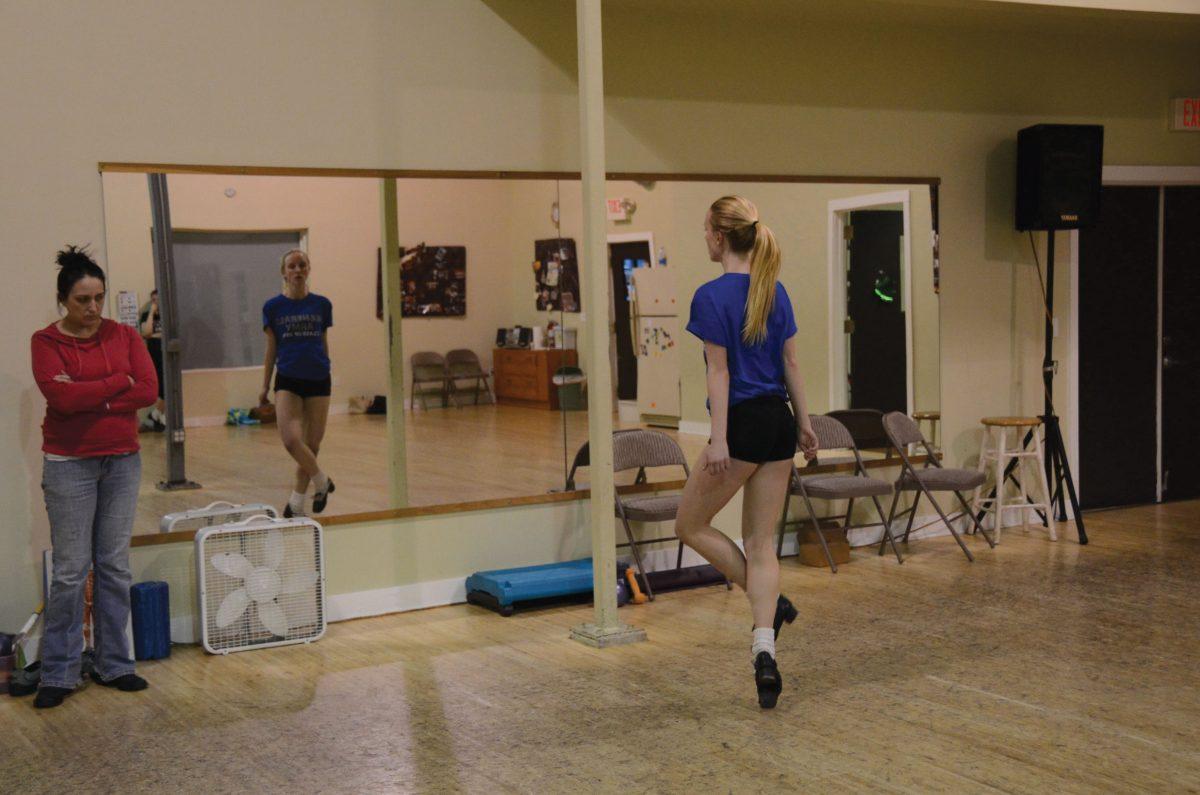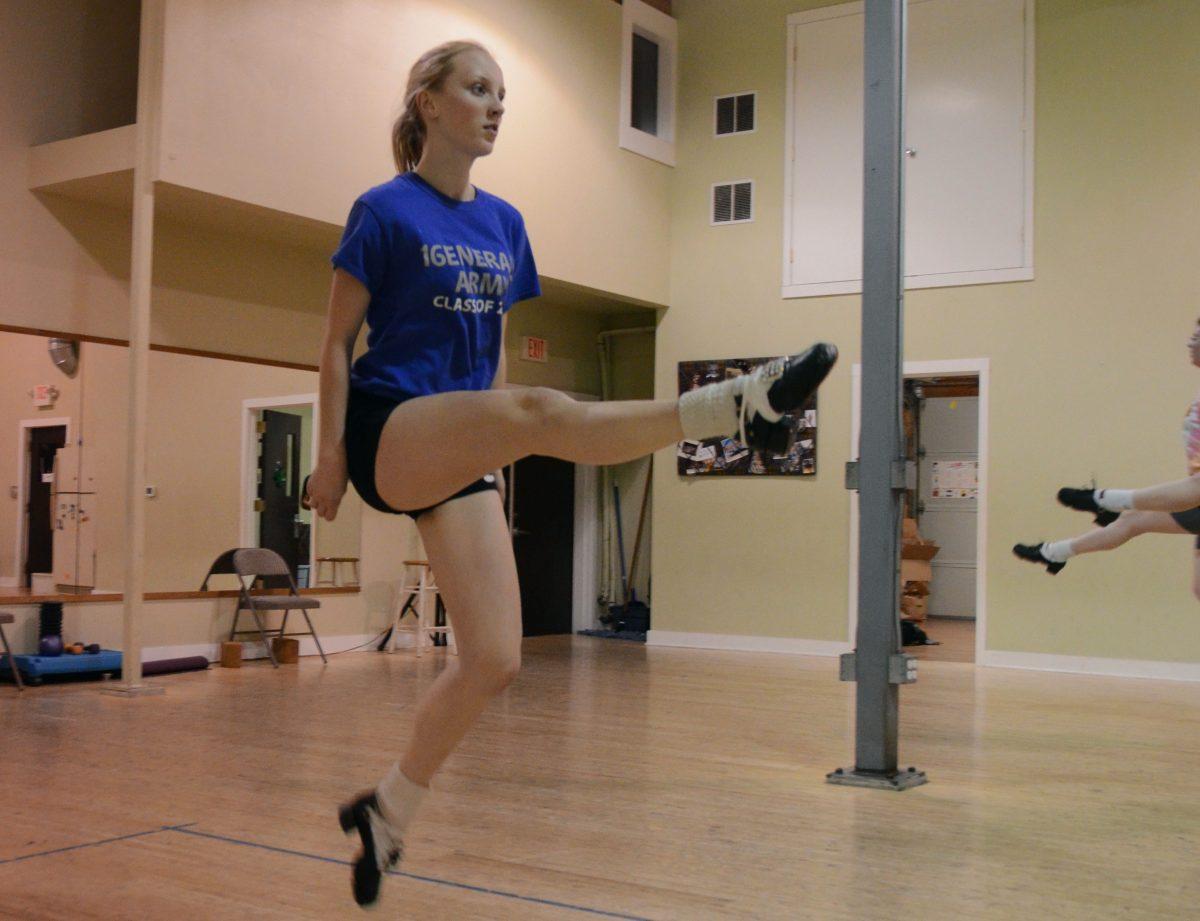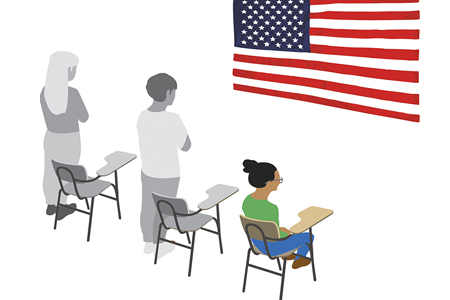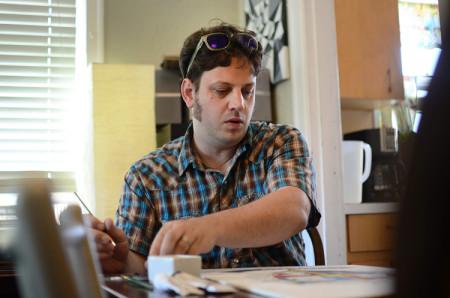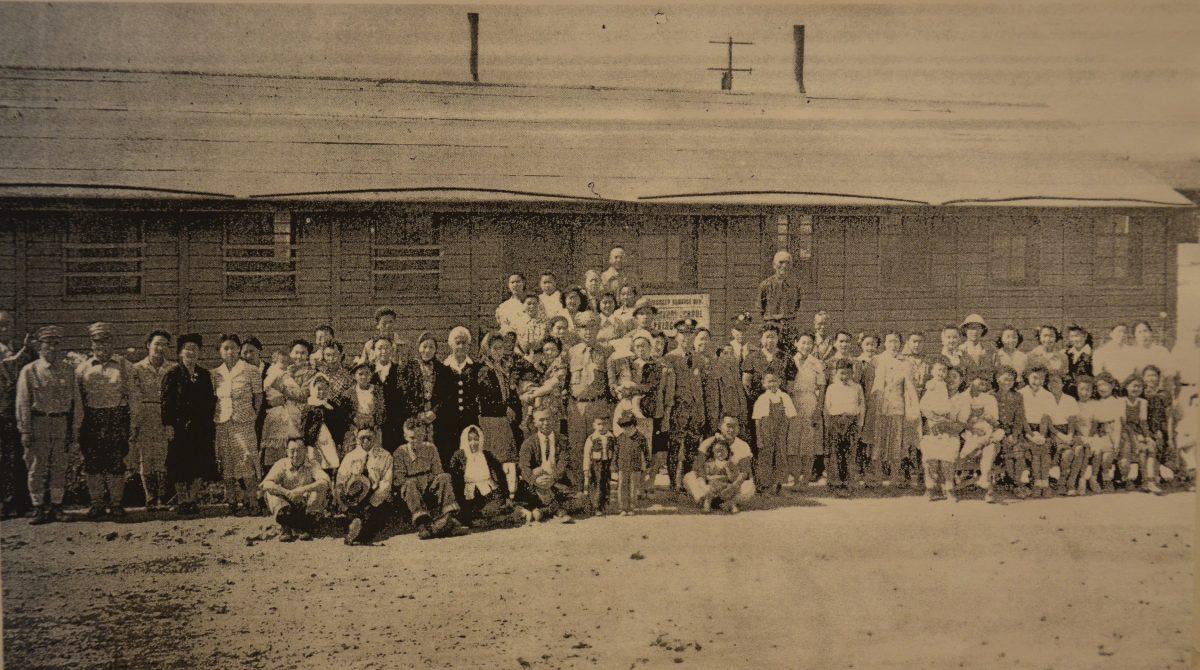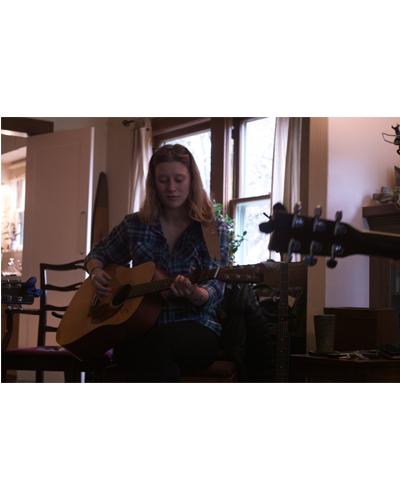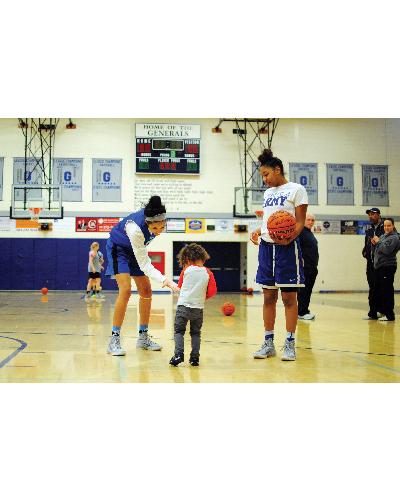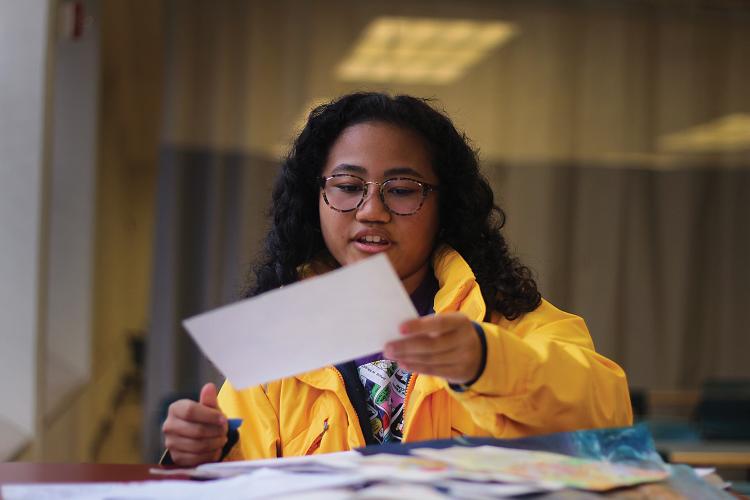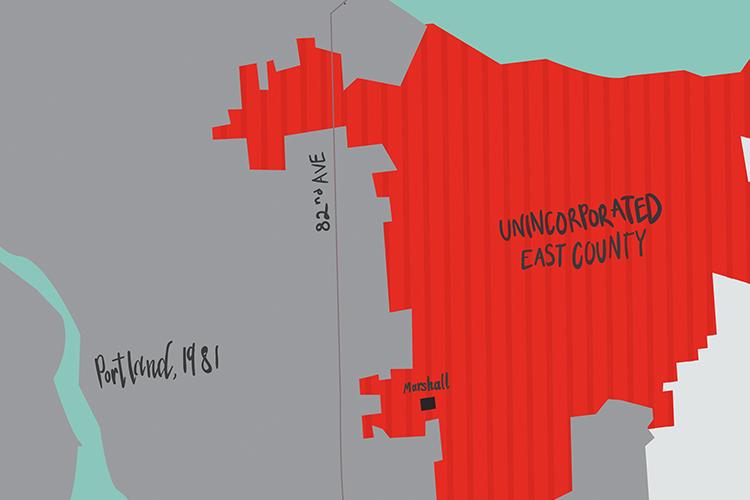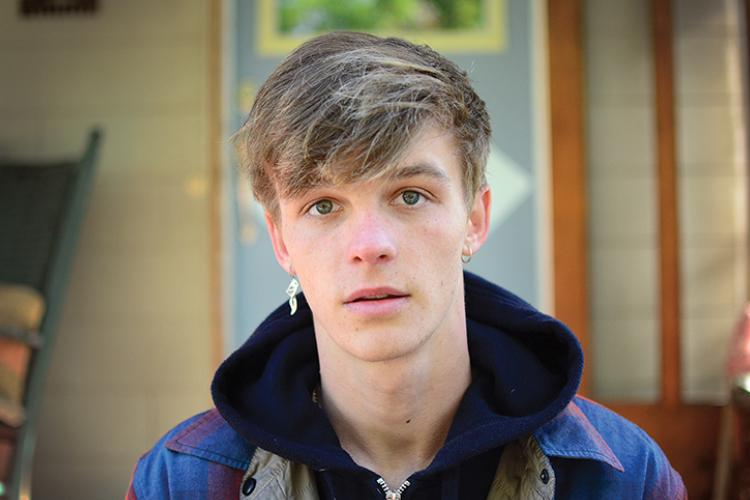It’s a Monday evening and Emily Nims-Fournier is alone in her basement. Dressed in casual running shorts, a T-shirt and black dance shoes decorated with gems, the Grant High School junior kicks her feet in tiny movements.
She sweeps across the floor with her arms pinned to her sides, fists clenched. The jumps and kicks come atop a small wooden platform lined with black tape that her father built for Nims-Fournier and her sister, who is also an Irish dance competitor.
Surrounded by mirrors and exercise equipment, Nims-Fournier finds that she can collect herself, be alone and concentrate on what’s ahead: the World Irish Dancing Championships held from March 29 to April 5 in Montreal.
While many young people explore the world of dance through ballet, tap or jazz lessons, nothing compares to the high-powered, demanding and high-energy world of Irish dance. Nims-Fournier has spent eight years honing her skills for competitions. She is the only dancer from her studio who qualified for the championships.
Today at 17, she’s seen a number of her friends drop Irish dance and move on, instead making more time for high school, friends or other extracurricular activities. Not so for Nims-Fournier. She sees Irish dance as both an escape from the day-to-day stresses of high school life and a way to take away some of life’s lessons, regardless of how well she performs.
“Even if you put a lot of work into something, you don’t always get the result you want,” she says.
Nims-Fournier was born in Northeast Portland in 1998. She’s the older of Steve Nims and Ann Fournier’s two daughters. Her sister, Kaitlin, is a 12-year-old seventh grader at da Vinci Arts Middle School.
Emily Nims-Fournier was always full of energy, her parents recall. They made it a priority to keep her busy, signing her up at age 2 for a creative movement dance class at Laurelhurst Dance Studio. “Emily just loved things like that,” her mom says.
Next came six years of ballet. But for Nims-Fournier, standing at a barre doing plies was far from exciting. She kept at it because her parents wanted her to. She also tried playing soccer on a recreational team but it didn’t capture her full attention.
It wasn’t until second grade that Nims-Fournier found her niche. She was at an assembly in the cafeteria at Alameda School when two young dancers from the Yeates Academy of Irish Dance in Portland performed. The dancers met with students, showing them their dance shoes and costumes.
Nims-Fournier was hooked. “I really liked just how energetic it was,” she recalls.
When she got home, she told her parents about the assembly. Ann Fournier did some research on Yeates Academy, which is one of several Irish dance studios in the Portland area. She took her daughter there to check it out and signed her up to take classes a few weeks later.
Yeates is located in North Portland and works with dancers beginning at age 5. Participants can join the performance group and can also compete if they choose. Multiple competitions are held every year.
According to Sinead Yeates, who is the studio’s main instructor, classes help students combine core strength, stamina, precision, rhythm and grace.
“Anyone who makes it to the World Championships, especially if you’re at the top three, it’s basically like winning the Olympics,” says Yeates, who has family from Ireland.
Nims-Fournier doesn’t have cultural ties to Ireland but that didn’t stop her from wanting to try it. “Right away, I was super into it,” she says. “I did a bunch of the steps I learned all over my house, even though they were probably wrong.”
When she started, Yeates remembers thinking Nims-Fournier was special. “She’s extremely intelligent,” her instructor says. “She just really understood not only the dance steps, but the timing, which is really, really important. Emily just caught on very fast.”
Nims-Fournier moved up through the levels quickly, creating bonds with many of the other dancers.
“Definitely, some of my closest friends are at the dance studio,” she says. “We don’t go to school together. (But) we all have one kind of bond that we can talk about.”
Before she entered sixth grade, Nims-Fournier was competing at the preliminary championship level, which she won twice. That made her eligible to move into the Open Championship level, the highest taught at Yeates.
She was the first of her friends to qualify.
But the excitement from becoming a champion soon wore off. In the beginning, Nims-Fournier had few people to talk to during her dance classes as the only sixth grader among what was mainly high school competitors. Because she had spent so little time at the preliminary level, keeping up with her new classmates was difficult. Her improvements in dance slowed and her confidence faded.
“It was kinda a low point in my dancing career,” she recalls. “I just felt like I was stuck.”
“(I learned that) Even if you put a lot of work into something, you don’t always get the result you want.” -Emily Nims-Fournier
It was through the help of her dance friends that she decided to step up her game. When she saw one of her closest friends qualify for the World Championships, she became determined to do the same. “I just really pushed it in class after that,” says Nims-Fournier.
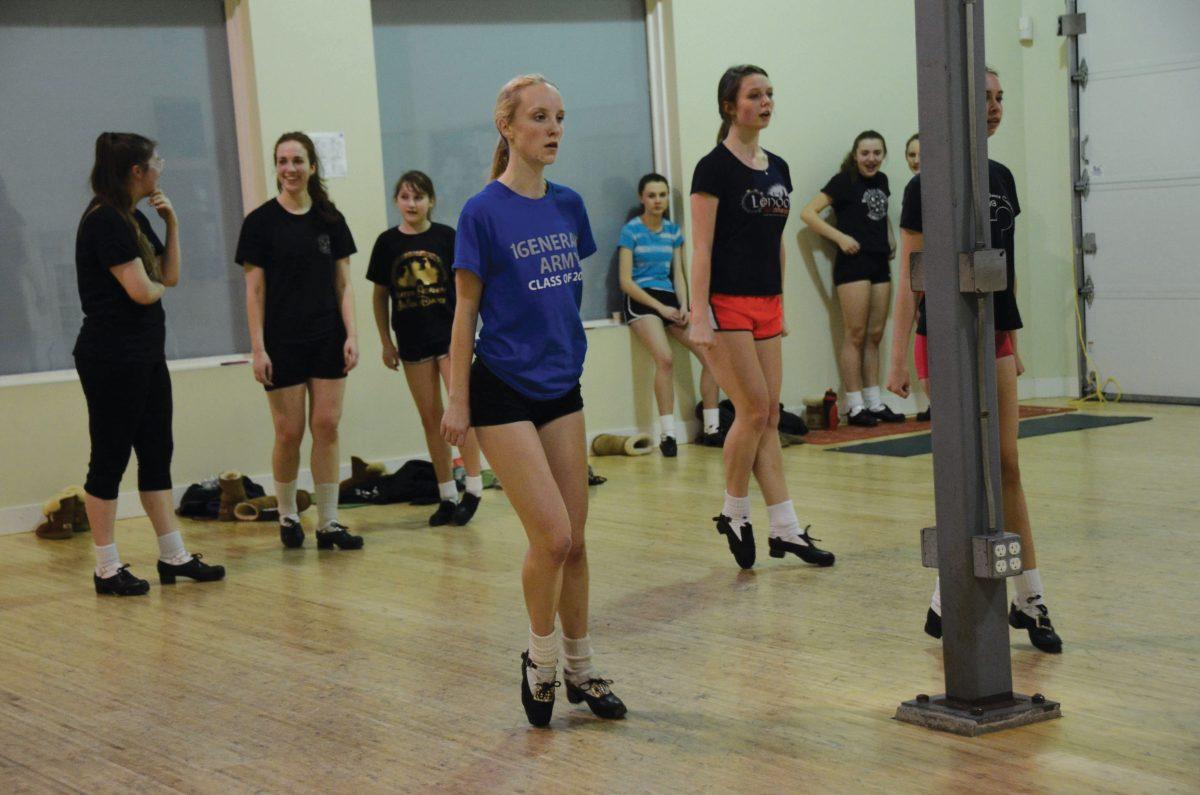
Everything shifted. Her focus narrowed. She remembers paying more attention to corrections from teachers. And she worked harder to master each skill before trying something new.
“I started dancing with more confidence,” she says.
And the confidence stuck. As she began improving her dancing in class, she placed higher in competitions. She calls it her “breakthrough” time. She began consistently winning awards and medals.
Between eighth grade and her freshman year at Grant, her ranking in the Regional Irish Dance Competition went from 29th to 9th.
“I remember there was a dance competition where she won, like, everything,” says her dad, Steve Nims. “And then they had a dance-off and she won that dance-off. And I remember some of these dancers going: ‘Oh look, there’s that girl who won all that stuff.’”
Toward the end of freshman year, Nims-Fournier qualified for and attended the World Championships competition in Boston. She didn’t make the first cut.
That summer in the next season, she traveled to Anaheim, Calif., with her family to dance in the Nationals competition.
Each competition involves three rounds of dancing. During nationals, the judges call back the better half of the dancers to dance in a third round. After being on a streak of improvement over the last several years, Nims-Fournier felt sure she would get called back. But she didn’t.
“Pretty much all my friends (were called back), and that was really hard,” she recalls. “I was really expecting to (make it) that year because I had improved so much and I was placing a lot higher.”
Yeates was equally as disappointed. “She danced really good coming up to it; it just wasn’t a good day,” Yeates says. “But the greatest thing was watching afterwards how she herself came back up and never felt sorry for herself.”
Judges at Irish dance competitions can often be subjective, Nims-Fournier says. Sometimes, they base their decisions more on the physical presentation of a dancer than on the quality of dance.
She remembers being angry for about a week and then she decided to turn the anger into resolve. “It made me more determined, and I came back and I did well at the next competition,” says Nims-Fournier. “I felt my dancing was going well, so I was ready to move on. You’re only in so much control.”
Now she has her sights set on the World Championships in Montreal. Her coach is putting her faith in Nims-Fournier and expects her to do well.
“Emily will be our next best hopeful,” says Yeates. “We’ve had dancers who were good. But Emily’s really, I would say, the strongest out of the group.”
Most people wouldn’t know it based on the way she carries herself at school. She seems just like the typical Grant student. Last summer, she worked at Grant pool as a lifeguard.
Now, she’s taking a plethora of Advanced Placement classes and is into her third year of visual arts classes. She runs on the cross country team and will run outdoor track for the third season in spring.
It’s not hard for Nims-Fournier to keep her Irish dance life separate from her school life. In fact, she usually doesn’t invite her friends to her competitions.
“I like to be able to focus and I’m just kinda afraid to lose my focus at a competition,” she says.
At a recent evening practice, Nims-Fournier is among a throng of dancers in the Yeates studio. When Yeates calls out a routine to the dancers, Nims-Fournier whips into focus.
At this point, the routine is all muscle memory. Head lifted and arms out, she dances gracefully across the floor, emphasizing each beat of the fiddle tune.
As she dances among several others, she has a sophisticated air about her. When the routine is over, Nims-Fournier heads back into a corner of the studio. Surrounded by several friends, she talks excitedly while tapping her feet on the floor. It’s clear this is where she belongs.
“When school gets stressful, it’s nice to have something where you can completely forget about that,” she says. “It’s always a safe place.” ◊





























